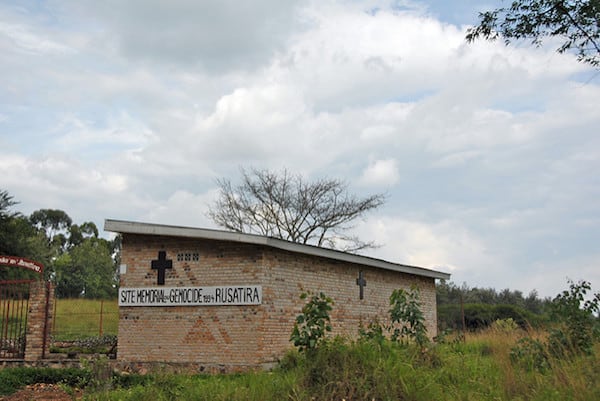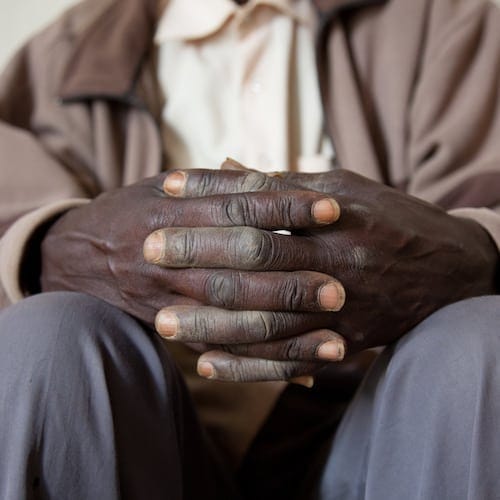In her new book, Kirsten Doughty provides us with an ethnographic account of the paradoxes, contradictions and omissions of remediation processes in post-genocide Rwanda. More precisely, by analyzing three grassroots legal forums grounded on mediation processes (gacaca, comite y’abunzi and legal aid clinics), the author take us through what is at stake for various sides in justice disputes following the conflict. Doughty argues that by establishing harmony-based legal forums – predicated on promoting unity and compromise and avoiding conflict – the government of Rwanda, besides aiming at restoring Rwanda’s “social fabric” (pp. 1), intended to further its reach and establish control over its population. Conjuring Foucault and Nader, the author proposes that these forums are, in effect, “…ways of governing through community”, that is, ways of managing people through the promotion and construction of specific social relationships between them.
Nevertheless, and although she ultimately sees these legal forums as coercion tactics deployed by the central government, the author rejects the notion that power can be exerted regardless of its objects, protagonists and circumstances.
 Indeed, all throughout the book she describes how people use these forums has opportunities to negotiate and transform their identities, allegiances and futures. The book can be divided in two parts. In the first part, composed by chapters one and two, the author unravels the broader contexts in which what she calls a “legal architecture of social repair” was created and operates. In the second part, she presents a detailed ethnographic account of the interactions which occur in the three different legal forums, where Doughty claims a “micropolitics of reconciliation” (Theidon in Doughty) is played out.
Indeed, all throughout the book she describes how people use these forums has opportunities to negotiate and transform their identities, allegiances and futures. The book can be divided in two parts. In the first part, composed by chapters one and two, the author unravels the broader contexts in which what she calls a “legal architecture of social repair” was created and operates. In the second part, she presents a detailed ethnographic account of the interactions which occur in the three different legal forums, where Doughty claims a “micropolitics of reconciliation” (Theidon in Doughty) is played out.
In the first chapter – “Silencing the Past: Producing History and the Politics of Memory”, the author focuses on the “master narrative” (pp. 64) created by the Rwandese government to legitimate itself and its political project. By drawing upon rich historiographic debates concerning Rwanda’s history, Doughty is able to reveal the strategic absences and presences of the government’s narrative and to show how it serves its own political agenda. Namely, how it emphasizes the responsibility of the international community for the Hutu genocide because of the role it played since colonial times in fueling ethnic divisions, and, in the process, shifts the attention away from the RPF’s (Rwandan Patriotic Front) past and current responsibilities in contributing to power relationships which favor an urban, Tutsi elite.
In “Escaping Dichotomies: Grassroots Law in Historical and Global Context”, the author relates the emergence of grassroots legal forums in Rwanda with broader trends concerning decentralization and “transitional justice”. She argues that by analyzing the three different legal forums under the same scope, as sharing a focus on mediation, we are able to push further the discussions concerning transitional justice by eliding distinctions between “genocide” and “nongenocide justice” (pp.93), between “cultural” and “universal justice principles” and between “restorative” and “retributive approaches” (pp. 94).
The third chapter – “Gacaca Days and Genocide Citizenship” – consists in an ethnographic account of the sessions of gacaca – a customary legal forum dedicated to Genocide related crimes. The author argues that the forum combined harmony and punishment in serving the purpose of controlling populations as communities. Nevertheless, Doughty explores how the forum was deeply embedded in daily life and solicited popular participation, allowing people to debate and negotiate what it means to be a victim or a perpetrator of the genocide, and also to use disputes concerning material goods to create new alliances or reproduce old inequalities.

The fourth chapter – Comite y’Abunzi: Politics and Poetics of the Ordinary – presents an ethnographic account of the sessions of Comite y’Abunzi – a customary legal forum tasked with mediating low-level criminal and civil disputes. As in the case of gacaca, comite y’abunzi combined harmony and punishment in delivering a form of control predicated upon the construction of community. Furthermore, because it also operated in a deeply contextualized fashion and had an open and flexible structure, comite y’abunzi enabled people to debate the terms of their reconciliation, in this case mainly around the notions of family and community.
The fifth chapter – “The Legal Aid Clinic: Mediation as Thick Description” – contains an ethnographic account of the counseling and mediation provided by law students and faculty members in legal aid clinics. The author shows how efforts to enact mediation principles and to govern through community are not restricted to customary style courts such as gacaca or comite y’abunzi. These sessions elicited what Doughty considers “thick descriptions” from participants, allowing them to debate and negotiate cultural and legal framings of issues such as land ownership, divorce or employment.
The final chapter – “Improvising Authority – Lay judges as Intermediaries” – focuses on the formal protagonists of the different legal forums, what Doughty calls “lay judges” (pp. 191), and how they brought to life the principles underpinning the different legal forums.
She contends that the practice of these figures – which were community “insiders”, were not professionalized but where representing the state – was mainly “improvisational” and “ambiguous”, preventing state action from being homogenous and having predictable effects.
In the introduction of her book, Doughty notes that her “… attention to coercion and negotiation may seem part of a theoretically dated discussion of structure and agency, yet these themes remain a central conundrum in contemporary scholarship on Rwanda” (pp. 27). Although it has become commonplace for anthropologists to state that they will not rob their collaborators of any of their agency or free-will, the fact is that many of them will often not accept the stakes of doing so. Many arguments about uneven power relationships forget that power itself is exerted in ambiguous circumstances by individuals who have their own specific inclinations. As such, power often emerges uncomplicated by the details of ethnographic research. On the contrary, in her book, Kirsten Doughty produces a nuanced account of justice in post-genocide Rwanda as an epicenter of conflicting agendas, power relationships and ideas about community, family, gender or culpability. This is substantiated by the way the author focuses on what she calls “lay judges”, in an attempt to come to grips with how the harmony-legal models are brought to life by concrete people. In doing so, she delivers what is a valuable book for legal anthropologists, and also for researchers interested in how justice plays out in post-conflict contexts.
Doughty, Kristin Conner. 2016. Remediation in Rwanda: Grassroots Legal Forums. 296 pp. Philadelphia: University of Pennsylvania Press. ISBN: 9780812247831
Featured image by Trocaire (flickr, CC BY 2.0).



